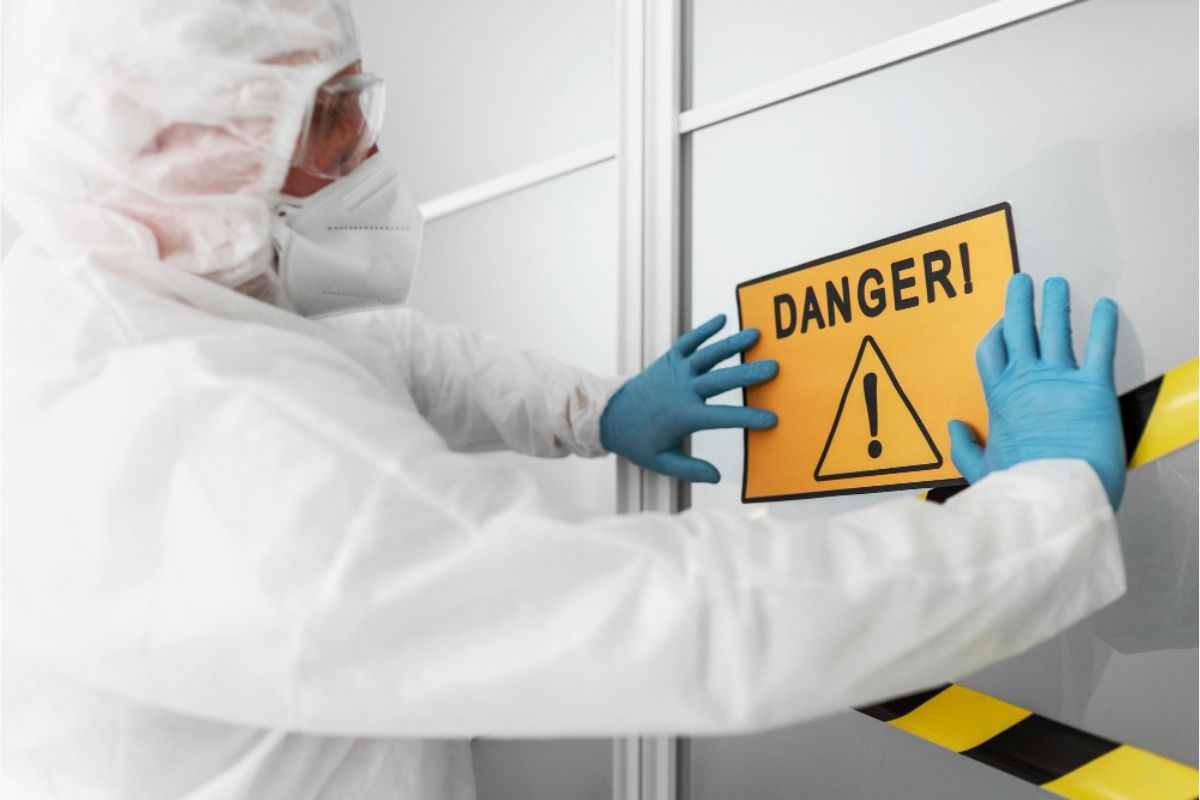Once hailed for its fire-resistant and insulating properties in construction, asbestos has become synonymous with grave health risks. Regardless of the setting—residential, commercial, or industrial—conducting asbestos risk assessments demands unwavering commitment to established procedures and protocols. The objective is clear: protect workers and the environment from the dangers posed by asbestos exposure. This all-inclusive blog will thoroughly explore the essential measures for carrying out asbestos hazard evaluations with the highest level of safety and accuracy.
Preparation and Planning for Asbestos Risk Assessment
Before undertaking any asbestos risk assessment, thorough preparation and planning are essential to ensure the safety of all involved and the effective execution of the assessment process. This stage involves carefully planned steps that lay the foundation for a successful asbestos risk assessment.
-
Understanding the Scope of Work:
The initial step revolves around a clear understanding of the project’s scope. This entails identifying the specific areas and materials that may contain asbestos. A thorough inspection of the site helps pinpoint the potential asbestos-containing materials (ACMs) and understand the challenges and complexities that may arise during the assessment.
-
Conducting a Comprehensive Risk Assessment:
Assessing asbestos risk involves identifying potential hazards and formulating mitigation strategies. Factors such as the type and condition of asbestos, the location of possible asbestos exposure, and the proximity of vulnerable individuals must be carefully evaluated to establish appropriate safety measures.
-
Developing a Detailed Risk Assessment Plan:
With a clear understanding of the project’s scope and associated risks, the next step involves crafting a detailed risk assessment plan. This plan outlines step-by-step procedures for a safe and efficient asbestos risk assessment. It encompasses critical aspects such as assessment methods, sampling strategies, worker protection protocols, and data collection procedures. A well-structured risk assessment plan ensures that every assessment part is meticulously considered and organized.
Safe Asbestos Risk Assessment Procedures:
Performing safe asbestos risk assessments is crucial to protecting laborers’ health and preventing potential asbestos exposure. Following the established procedures guarantees that the assessment procedure is executed cautiously and accurately.
-
Setting up the Assessment Area:
Creating a controlled assessment environment is foundational to a safe asbestos risk assessment. This involves strategically setting designated assessment zones, ensuring optimal ventilation, and implementing stringent safety measures to prevent asbestos exposure. Isolation of the assessment area serves a dual purpose—shielding those outside it and minimizing the risk of contamination.
-
Personal Protective Equipment (PPE) Requirements:
Personal protective equipment (PPE) is vital to protect against asbestos exposure. There is no room for compromise regarding PPE; it’s non-negotiable. The essential equipment includes respirators, disposable coveralls, gloves, and specialized footwear. However, the effectiveness of PPE hinges on proper usage, fitting, and disposal so instruction must be given.
-
Sampling and Analysis Techniques:
The heart of asbestos risk assessment lies in meticulous sampling and analysis techniques. These techniques aim to identify and quantify asbestos-containing materials without releasing harmful fibers into the environment. Collecting samples from various potential sources and subjecting them to laboratory analysis requires specialized equipment and procedures that minimize the risk of asbestos fiber release during sampling.
Regulatory Compliance and Legal Obligations:
Ensuring people’s and the environment’s safety is paramount, which can be achieved by following asbestos-related laws and obligations. It is not only a legal obligation but also an ethical responsibility to comply with these regulations, which help prevent asbestos-related health hazards.
-
The Control of Asbestos Regulations 2012, UK:
The Control of Asbestos Regulations (CAR) 2012 is a UK regulation that manages and prevents asbestos-related health risks. It outlines legal requirements for those exposed to asbestos, including identification, safe removal and awareness, and protection of workers and the public. Compliance with CAR 2012 is mandatory and crucial for preventing asbestos-related diseases and ensuring safety.
-
Employer and Employee Responsibilities:
A precise comprehension of the roles and duties of workers and employers is essential for complying with asbestos regulations. Employers are accountable for ensuring a secure working environment, providing adequate training, and taking necessary protective measures for their employees. In contrast, employees must abide by the established safety protocols, use the provided PPE, and immediately report any potential asbestos hazards.
-
Reporting Requirements for Asbestos-Related Issues:
One of the critical aspects of regulatory compliance is the timely reporting of asbestos-related issues. This includes reporting the presence of asbestos-containing materials, incidents of exposure, or suspected asbestos hazards. Reporting allows relevant authorities to take appropriate actions to mitigate risks and enforce compliance with regulations.
Data Evaluation and Reporting:
Upon completing the asbestos risk assessment, the critical phase of data evaluation and reporting comes into play. This phase serves as the bridge between the data collected for the evaluation and the necessary actions that must be taken to safeguard human health and the environment. It’s not merely a procedural step; it’s transforming raw information into informed, strategic decisions.
-
Data Analysis and Reporting:
After the assessment, the collected data collected from the assessment undergoes rigorous analysis to determine the presence and concentration of asbestos. The results are documented in a comprehensive report as a crucial information repository. This report includes details about the assessment methods, sampling locations, analysis results, and any identified asbestos-containing materials.
-
Recommendations for Mitigation or Removal:
The findings of the asbestos risk assessment serve as a compass, guiding subsequent actions. Recommendations for the mitigation or removal of asbestos-containing materials are often provided. These recommendations form the basis for effectively addressing asbestos risks, whether it involves containment or complete removal.
-
Documentation for Records and Compliance:
Comprehensive documentation is the thread that weaves regulatory compliance and accountability together. Records should encompass detailed information, such as the assessment plan, risk assessment reports, analysis results, and recommendations. Proper documentation serves as a historical record of the assessment process, providing a solid foundation of evidence should it be needed in the future.
Conclusion:
Adhering to safe asbestos risk assessment practices isn’t just about ticking boxes; it’s a moral and ethical imperative. From meticulous preparation and planning to carefully executing assessment procedures, every step must be executed with precision and diligence. Proper containment, personal protective equipment, and sampling techniques form the bedrock of a secure assessment environment.
Thorough data evaluation, reporting, and documentation ensure compliance with regulations and provide a clear record of the assessment’s findings. By embracing these practices, we contribute to a healthier, safer future—one where the risks associated with asbestos exposure are effectively managed and the well-being of individuals and communities is prioritized.
Remember, a proper asbestos risk assessment is the gateway to achieving excellence in this critical process, ensuring that it is conducted with the highest level of expertise and care. Through our collective commitment to these protocols, we pave the way for a world where the hazards of asbestos are effectively managed and the well-being of all is safeguarded.












